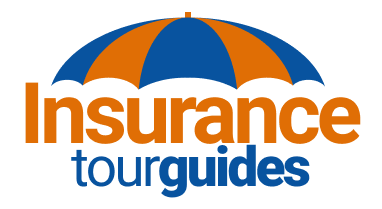Raging wildfires, stronger hurricanes, and record-breaking floods—climate change isn’t just a scientific debate anymore. It’s a financial reality, and the insurance industry is feeling the heat. For businesses and homeowners alike, the cost and availability of insurance are shifting fast.
Here’s how climate change is reshaping insurance coverage, and what you need to know.
Climate Risks Are Driving Up Insurance Costs
As extreme weather events become more frequent and severe, insurers are paying out more in claims than ever before. From property damage to business interruptions, the financial toll keeps rising.
Key Drivers of Rising Premiums:
-
Wildfires in the West causing billions in damages annually
-
Hurricanes increasing in strength and frequency along the Gulf and East Coasts
-
Flooding impacting areas not previously considered high-risk
-
Heatwaves straining infrastructure and driving up energy use
In response, many insurance companies are raising premiums—or exiting high-risk markets altogether.
Coverage Is Getting Harder to Find
In certain states, especially California and Florida, major insurers have reduced new policy offerings or pulled out entirely from specific ZIP codes. This leaves homeowners and businesses scrambling for alternatives, often with higher costs and less coverage.
Common Coverage Changes:
-
Lower maximum payout limits
-
Increased deductibles
-
Exclusions for flood or wildfire damage
-
Short-term or non-renewable policies
New Risk Models Are Rewriting the Rules
Insurers are updating how they assess risk. Traditional models relied heavily on historical data, but with climate patterns shifting so quickly, that’s no longer enough.
What’s Changing:
-
Use of satellite imagery and AI to map fire and flood zones in real time
-
Integration of predictive models for climate-driven events
-
More granular assessments—down to the property level
These advanced tools help insurers make smarter underwriting decisions, but they can also result in pricier or denied coverage for properties deemed high-risk.
Business Insurance and Climate Impacts
It’s not just homeowners who are affected. Businesses face growing climate-related exposures, especially those reliant on physical locations, supply chains, or outdoor operations.
Common Business Risks:
-
Flooded storefronts or warehouses
-
Supply chain disruptions due to weather events
-
Lost revenue from mandatory evacuations or road closures
-
Employee safety hazards during heatwaves or storms
Adjusting Coverage:
Businesses are encouraged to reevaluate policies like:
-
Property Insurance (especially limits and exclusions)
-
Business Interruption Insurance
-
Commercial Flood Insurance
-
Inland Marine Insurance (for mobile assets and equipment)
Government Backstops and Insurance Gaps
In response to shrinking private coverage, some governments are stepping in with last-resort programs. While helpful, these plans often come with limitations.
| State-Run Program | Purpose | Common Limitations |
|---|---|---|
| California FAIR Plan | Fire insurance for high-risk properties | Limited coverage, expensive premiums |
| Florida Citizens | Windstorm and property coverage | Longer claim processing, rate increases |
| NFIP (National Flood Ins.) | Flood coverage across the U.S. | $250K cap on residential structures |
These programs provide a safety net, but they’re not designed for long-term comprehensive coverage.
How Insurers Are Adapting
Rather than just raising rates, many insurers are developing innovative solutions to keep up with climate change.
Industry Trends:
-
Incentivizing risk mitigation: Discounts for installing fire-resistant roofs, flood barriers, or solar panels
-
Investing in climate resilience tech: Drones for inspection, weather analytics platforms
-
Offering parametric insurance: Pays out based on event triggers (like wind speed), not damage assessments
What Policyholders Can Do
While you can’t control the climate, you can take steps to protect your property and lower your insurance risk.
Smart Moves:
-
Conduct a risk assessment of your property
-
Invest in preventative upgrades (e.g., sump pumps, fire-resistant landscaping)
-
Review your policy yearly with your agent
-
Consider excess or specialty insurance if you live in a high-risk area
A Quick Look at Climate-Influenced Insurance Trends
| Change Area | Then (Traditional) | Now (Climate-Influenced) |
|---|---|---|
| Risk Modeling | Historical loss data | AI & real-time environmental data |
| Policy Pricing | Based on region/ZIP code | Property-specific risk scoring |
| Coverage Availability | Wide and general | Restricted in high-risk zones |
| Claims Frequency | Predictable, seasonal | Spiking unpredictably across all regions |
| Policyholder Role | Passive buyer | Active participant in risk mitigation |
Looking Ahead
Climate change isn’t going away, and the insurance industry knows it. As risks rise, so will the pressure to find sustainable ways to protect homes, businesses, and communities. This might mean higher premiums, yes—but also smarter policies, better tech, and more resilient infrastructure.
If you live or work in an area vulnerable to climate extremes, now’s the time to reassess your coverage. A proactive approach today could save you thousands tomorrow.

